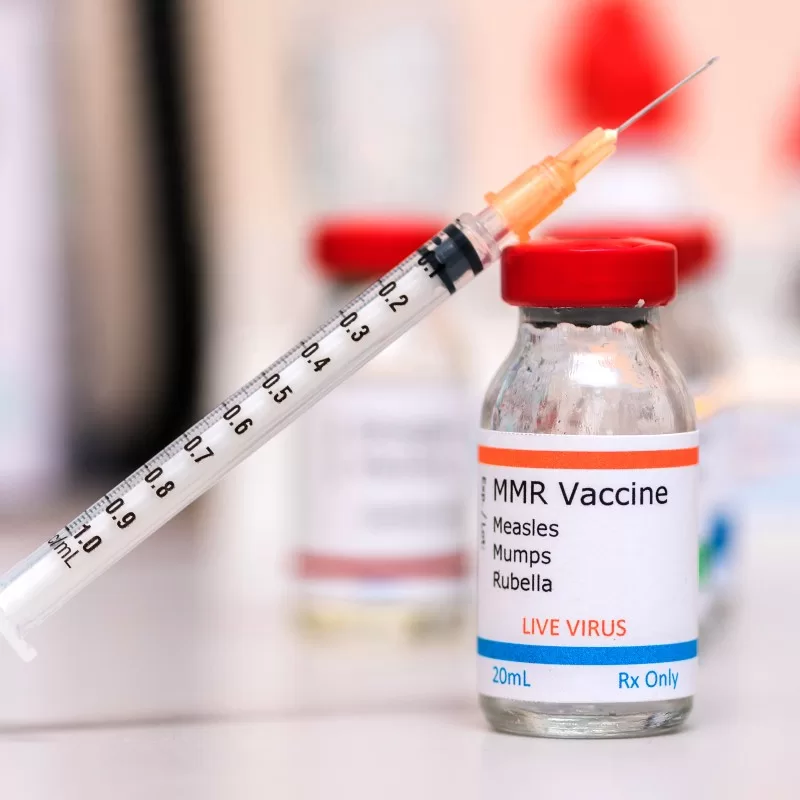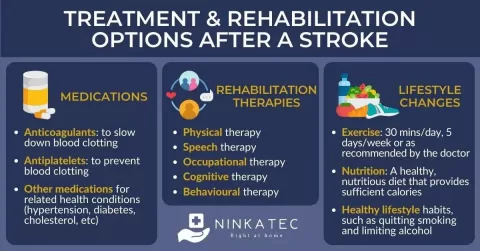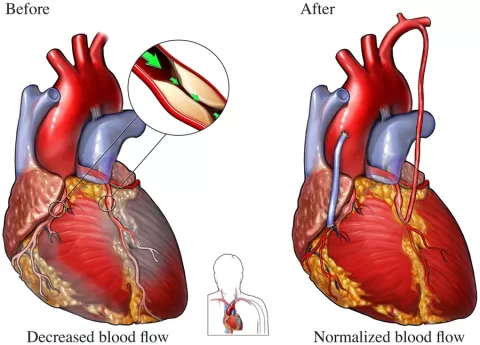Measles vaccination is a crucial public health measure that helps prevent the spread of this highly contagious virus. The MMR vaccine, which protects against measles, mumps, and rubella, is vital in achieving herd immunity and reducing the risk of outbreaks. Despite its effectiveness, some vaccinated individuals can still contract the virus, though their symptoms are generally milder compared to those who are unvaccinated. In recent years, there have been various reports highlighting the need for awareness about measles symptoms and the importance of maintaining high vaccination rates. With the potential for a measles outbreak looming, understanding vaccination and the role of booster shots is more important than ever for community health.
Immunization against measles is not just a personal health choice but a community responsibility. The measles, mumps, and rubella (MMR) vaccine plays a significant role in promoting overall public health by offering protection against these infectious diseases. Even with vaccinations, there exists a small risk of contracting measles, prompting discussions about vaccine effectiveness and the necessity of follow-up doses. Being informed about the signs of the virus is invaluable, especially as sporadic cases continue to arise. This highlights the imperative of fostering herd immunity through widespread vaccination and understanding how a measles booster shot can enhance protection.
Understanding Measles and Its Transmission
Measles is a viral infection that poses considerable risk to those who are unvaccinated. It primarily spreads through respiratory droplets that are released when an infected person coughs or sneezes. As a highly contagious disease, measles can remain airborne for up to two hours, making it easy for the virus to spread in public places. The Centers for Disease Control and Prevention (CDC) has reported that approximately 90% of non-immune individuals who come into contact with an infected person will contract measles. This underscores the critical importance of maintaining high vaccination rates within communities to achieve herd immunity and protect the most vulnerable populations.
Additionally, recognizing the early signs of measles is vital for quick identification and containment. Symptoms typically emerge 7 to 14 days post exposure and include a high fever, cough, and runny nose, eventually leading to a characteristic rash. In severe cases, complications such as pneumonia and encephalitis can arise, particularly among young children. Thus, understanding how measles spreads and its symptoms can empower families to take proactive measures to safeguard their health and the health of others.
The Importance of Measles Vaccination
Vaccination against measles is essential not only for individual health but also for community well-being. The Measles, Mumps, and Rubella (MMR) vaccine is highly effective, with two doses offering about 97% protection against measles. This is crucial in preventing outbreaks, especially as recent reports indicate a resurgence of cases in several states. Health organizations advocate for vaccination to establish herd immunity, which occurs when a significant portion of the population is immunized, thereby providing a degree of protection to those who remain unvaccinated.
Moreover, the MMR vaccine has been thoroughly evaluated for safety and efficacy, debunking unfounded concerns linking it to autism. By vaccinating children and adults, communities can not only protect themselves but also contribute to the overall decrease in measles cases. This collective effort is key in preventing potential outbreaks, as evidenced by the 712 measles cases confirmed in the U.S. this year. Educating the public about the documented effectiveness of the MMR vaccine is crucial in promoting higher vaccination rates.
Recognizing Measles Symptoms Early
Early recognition of measles symptoms is essential to prevent further spread of the disease. Initially, individuals may experience a high fever, fatigue, cough, runny nose, and conjunctivitis. Following these symptoms, a distinctive red, blotchy rash can appear, often starting at the hairline and spreading down the body. Koplik spots—small white lesions inside the mouth—may also provide an early diagnostic clue. Understanding these symptoms allows for prompt medical care and reduces the risk of the virus spreading within the community.
In many cases, measles can lead to severe health complications, especially in young children or individuals with compromised immune systems. Hospitalization rates are significantly higher among unvaccinated individuals, with one in five contracting severe illness. Early detection through awareness of symptoms can lead to timely interventions, minimizing complications and protecting overall public health. Regular consultations with healthcare providers can help ensure that individuals stay informed about symptoms and vaccination status.
Configuring Measles Herd Immunity
Achieving measles herd immunity is a critical public health goal that protects the entire community by reducing the spread of the virus. Herd immunity occurs when a sufficient percentage of the population is immune, either through vaccination or previous infection, making it difficult for the virus to propagate. For measles, this immunity threshold is generally considered to be above 95%, necessitating widespread vaccination efforts to maintain community protection.
Failure to reach this immunity level can result in outbreaks, as illustrated in recent years with various states experiencing alarming increases in measles cases. Public health initiatives aimed at increasing MMR vaccination rates are not merely about individual protection, but rather about ensuring community resilience against outbreaks. Therefore, prioritizing vaccination campaigns and educating the public on the importance of herd immunity is vital in combating measles effectively.
Measles Vaccine Effectiveness Explained
The effectiveness of the MMR vaccine is a critical factor in public health strategies aimed at reducing the incidence of measles. A single dose of the vaccine offers approximately 93% protection against the disease, while two doses increase effectiveness to about 97%. This high level of effectiveness helps to significantly curb the spread of the virus, thereby preventing outbreaks in communities that maintain high vaccination coverage. Understanding these statistics enables parents and guardians to make informed decisions regarding their children’s health.
Numerous studies have shown that the benefits of measles vaccination far outweigh the risks. The MMR vaccine not only protects against measles but also against mumps and rubella, contributing to a healthier population overall. Additionally, vaccinating children prevents the complications associated with measles, which can include pneumonia and encephalitis. The focus on vaccine effectiveness emphasizes the importance of adhering to vaccination schedules to ensure both individual and community immunity.
Post-Vaccination Care and Measles Booster Shots
After receiving the MMR vaccine, it’s important for individuals to be aware of potential side effects and the importance of follow-up vaccinations. While most people experience no serious adverse effects, mild fever and rash may occur. In rare cases, serious reactions can happen, which is why it’s essential to monitor health post-vaccination. Healthcare providers should be consulted for any unusual symptoms following vaccination.
Additionally, while most individuals do not require a measles booster shot if they have received two doses, certain groups may need to consider additional doses, particularly healthcare professionals or those traveling to regions with ongoing measles outbreaks. Evaluating immunity status through consultation with healthcare providers can help determine whether a booster is necessary, ensuring continued protection against the highly contagious virus.
Mitigating Measles Outbreak Risks
Given the potential for measles outbreaks, it is crucial for communities to adopt proactive measures to mitigate risks effectively. Public awareness campaigns can play a vital role in educating families about the importance of vaccinations and how to recognize the symptoms of measles. Increased vigilance during outbreaks can help contain the spread of the virus while encouraging those who are unvaccinated to seek immunization.
Local health departments can implement initiatives aimed at increasing vaccination rates and track measles cases to identify outbreaks early. Collaboration between schools, community organizations, and healthcare providers can foster environments that prioritize public health. By working together, communities can significantly reduce the risk of measles outbreaks and protect their most vulnerable members.
Understanding the Composition of the MMR Vaccine
Understanding what goes into the MMR vaccine is vital for parents considering vaccination for their children. Each dose of the MMR II vaccine contains various components designed to ensure effectiveness and safety. Ingredients like hydrolyzed gelatin and neomycin serve essential roles in the preservation and administration of the vaccine. By thoroughly vetting vaccine components, manufacturers ensure the product is both effective in eliciting a strong immune response while maintaining a high safety profile.
Moreover, concerns about vaccine ingredients rarely align with scientific evidence. Extensive research has shown that vaccines, including the MMR, do not lead to autism or other long-term health issues. This knowledge can empower parents to make informed choices about vaccinating their children, ultimately leading to higher vaccination rates and increased protection against measles and other preventable diseases.
The Impact of Measles on Public Health
Measles continues to pose a significant threat to public health, particularly in regions with lower vaccination rates. Recent outbreaks have revealed vulnerabilities in community immunity, leading health organizations to emphasize the necessity of vaccinations. Measles not only poses immediate health risks but also strains healthcare systems during outbreaks, leading to increased hospitalization rates and public health interventions.
Addressing this public health concern involves a multi-faceted approach, including advocacy for immunization, education regarding the disease, and support for affected families. Public health campaigns can raise awareness about the importance of immunization against measles and ensure that individuals remain vigilant against this preventable disease. By reinforcing community commitment to vaccination, we can aim to eradicate measles altogether.
Frequently Asked Questions
What is the effectiveness of the MMR vaccine against measles?
The MMR vaccine, which is administered in two doses, is reported to have a 97% effectiveness rate against measles. The first dose provides about 93% effectiveness, while the second dose boosts immunity significantly.
Can you still get measles if you are vaccinated with the MMR vaccine?
Yes, it is possible to contract measles even after receiving the MMR vaccine, although it is rare. Approximately 3 out of 100 people vaccinated may experience milder symptoms if they become infected.
What are the symptoms of measles to watch for?
Symptoms of measles typically appear 7 to 14 days post-exposure and include high fever, cough, runny nose, watery eyes, and a reddish-brown rash that can spread throughout the body.
How do measles outbreaks occur despite vaccination?
Measles outbreaks can occur when vaccination rates drop below the herd immunity threshold, which is around 95%. Low vaccination coverage allows the virus to spread among unvaccinated individuals.
Do I need a measles booster shot if I am an adult?
Most vaccinated adults do not need a measles booster shot unless they are in specific groups, such as healthcare workers or travelers. Individuals born before 1957 are usually considered immune due to past infections.
What is herd immunity in relation to measles vaccination?
Herd immunity occurs when a high percentage of the community is vaccinated, reducing the overall amount of virus that can spread. For measles, an immunization rate of 95% is necessary to effectively prevent outbreaks.
What should I do if I suspect I have measles?
If you suspect you have measles, it is important to isolate yourself and contact a healthcare provider immediately. Avoid public places to prevent further transmission of the virus.
| Key Points | Details |
|---|---|
| Vaccination Effectiveness | One dose of the MMR vaccine is 93% effective against measles, while two doses increase effectiveness to 97%. |
| Risk of Contracting Measles After Vaccination | About 3 out of 100 vaccinated people may contract measles; symptoms are milder compared to unvaccinated individuals. |
| Need for Booster Shots | Most vaccinated adults do not need a booster; those born before 1957 likely have lifelong immunity. |
| Transmission of Measles | Measles is highly contagious and spreads through respiratory droplets and aerosols from coughing and sneezing. |
| Symptoms of Measles | Common symptoms include high fever, cough, runny nose, watery eyes, and a distinctive reddish-brown rash. |
| Contents of Measles Vaccine | The MMR II vaccine contains ingredients like sorbitol, sucrose, hydrolyzed gelatin, and neomycin. |
| Debunking Vaccine Myths | Large studies have proven no link between the MMR vaccine and autism. |
Summary
Measles vaccination is crucial in preventing the spread of this highly contagious disease. The CDC highlights that while breakthrough cases can occur in vaccinated individuals, they are rare and usually present with milder symptoms. Maintaining up-to-date vaccinations and consulting with healthcare providers for booster recommendations can significantly enhance personal and community immunity against measles.
The content provided on this blog (e.g., symptom descriptions, health tips, or general advice) is for informational purposes only and is not a substitute for professional medical advice, diagnosis, or treatment. Always seek the guidance of your physician or other qualified healthcare provider with any questions you may have regarding a medical condition. Never disregard professional medical advice or delay seeking it because of something you have read on this website. If you believe you may have a medical emergency, call your doctor or emergency services immediately. Reliance on any information provided by this blog is solely at your own risk.








